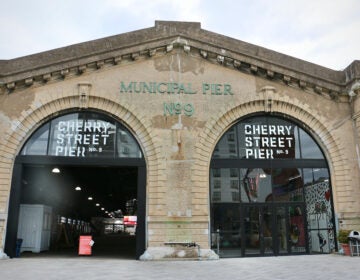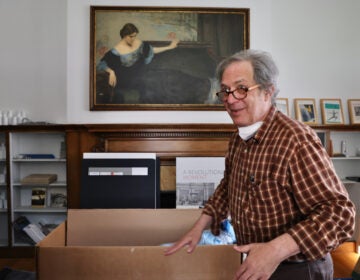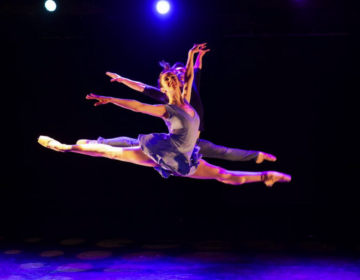The arts are having a bumpy pandemic recovery in Philly, new report shows
An influx of $6 million in federal COVID recovery funds is coming to Philly. But a new study shows the progress in the arts sector is uneven.
Listen 1:13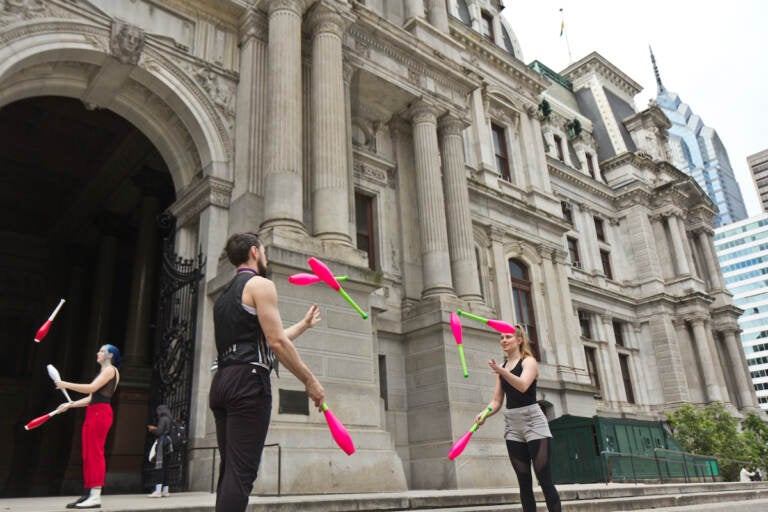
File photo: Members of the performance troupe Circadium juggle at the #fundPHLarts rally outside City Hall in Philadelphia on May 11, 2022. (Kimberly Paynter/WHYY)
From Philly and the Pa. suburbs to South Jersey and Delaware, what would you like WHYY News to cover? Let us know!
The arts sector in the Philadelphia region has seen incremental recovery since the pandemic, according to a new economic survey, but it’s still a long way from what it once was.
The Greater Philadelphia Cultural Alliance and the PA Humanities have released preliminary findings of a larger, statewide report called CultureCheck, which will be issued later in January. It shows that recovery has been uneven across the sector.
Just one-third of respondents, or 32%, indicated their audience engagement has returned to pre-pandemic levels, with another 13% expecting to get to those levels this year. But recovery depends on the type of institution: museums, history and science institutions, and service organizations have shown a stronger bounce-back than performing arts, which lag at just 15% recovery.
Another metric of economic health is to what capacity organizations can operate, such as hiring staff and providing programming. During the pandemic, some organizations laid off or furloughed staff and reduced programming, sometimes down to nothing at all.
About one-quarter of survey respondents, or 23%, said they are still operating at reduced capacity. That is 10% fewer than last year.
Another 17% said they are operating at “modified capacity,” or have adapted the way they operate. That is a key metric, said Patricia Wilson Aden, the president and CEO of the Greater Philadelphia Cultural Alliance, as “pre-pandemic levels” are not necessarily the standard anymore.
“Clearly they are not looking at returning to the way things were, using those same business models and those same strategies,” Aden said. “They are adjusting to this — I hate this term — this ‘new normal’ recognizing that the environment has changed and we don’t have control over all of the factors that have changed the environment.”
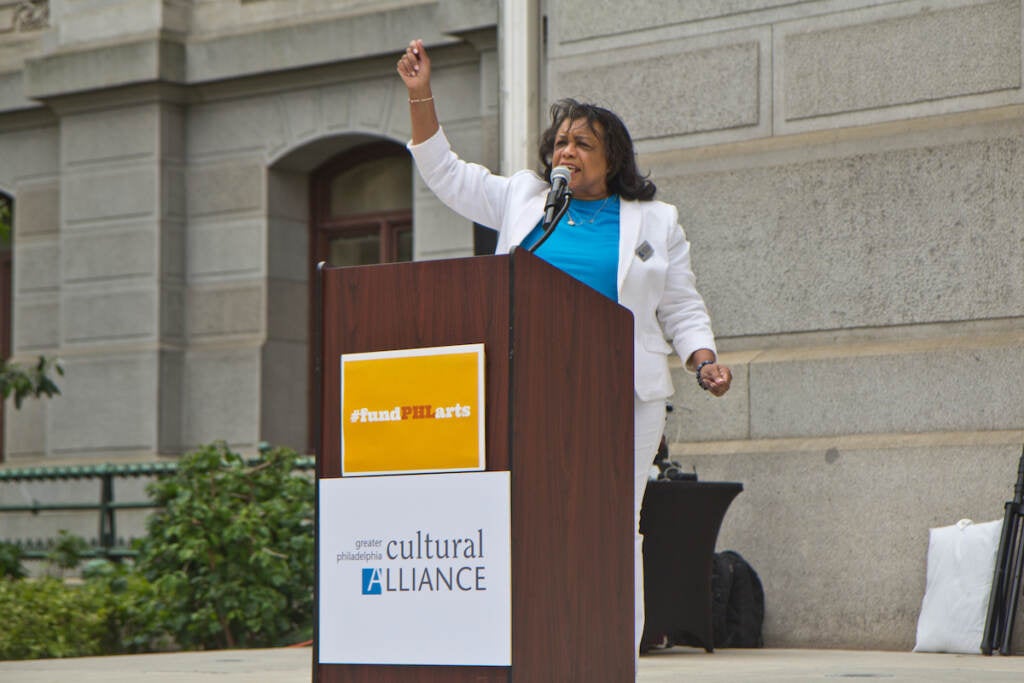
Some legacy, mainstay cultural institutions have shown a return to what they had been in 2019, such as the Philadelphia Ballet’s current production of “Nutcracker,” which is expected to break attendance records. The run ends on Saturday, Dec. 30, and ticket sales have already exceeded those of last year. About 55,000 people are expected to see “The Nutcracker” this year.
Other cultural groups are re-imagining how to present work. For its New Year’s Eve show this weekend, the theater company Tiny Dynamite is introducing a casual event with pop-up performances, food, and adult beverages, which ends early in the evening. The 5:30 and 8 p.m. shows are designed to allow attendees to “continue on to a dinner, a party, or their PJs.”
The January release of the full CultureCheck report will coincide with the expected release of a national report on the health of the cultural sector, the Americans for the Arts “Arts and Economic Prosperity” report (AEP6). Normally released every five years, the report was delayed due to the pandemic. The last AEP report was released in 2017.
“This recovery is an incremental but progressive process. A lot of organizations have anticipated a cliff,” Aden said. “By providing this information, our philanthropic community, our donors and other stakeholders, and our elected officials can understand that progression and ensure that cliff is mitigated.”
The cultural sector in Pennsylvania did just receive a Christmas present: the Commonwealth Finance Authority approved the release of $15 million to arts and culture organizations, as PA Arts and Culture Recovery grants. That money has trickled down from the federal American Rescue Plan Act.
About $6 million will be distributed to 151 organizations in Philadelphia, Montgomery, Bucks, Delaware, and Chester counties. The lion’s share is going to 116 organizations in Philadelphia. The funds are unrestricted and can be used for general operating costs. The GPCA received $495,000, which it will re-grant to other local cultural organizations.
“This infusion of funds will help stabilize organizations so that they can continue to employ their staff,” Aden said. “They can continue to operate and plan for the future.”

Get daily updates from WHYY News!
WHYY is your source for fact-based, in-depth journalism and information. As a nonprofit organization, we rely on financial support from readers like you. Please give today.



